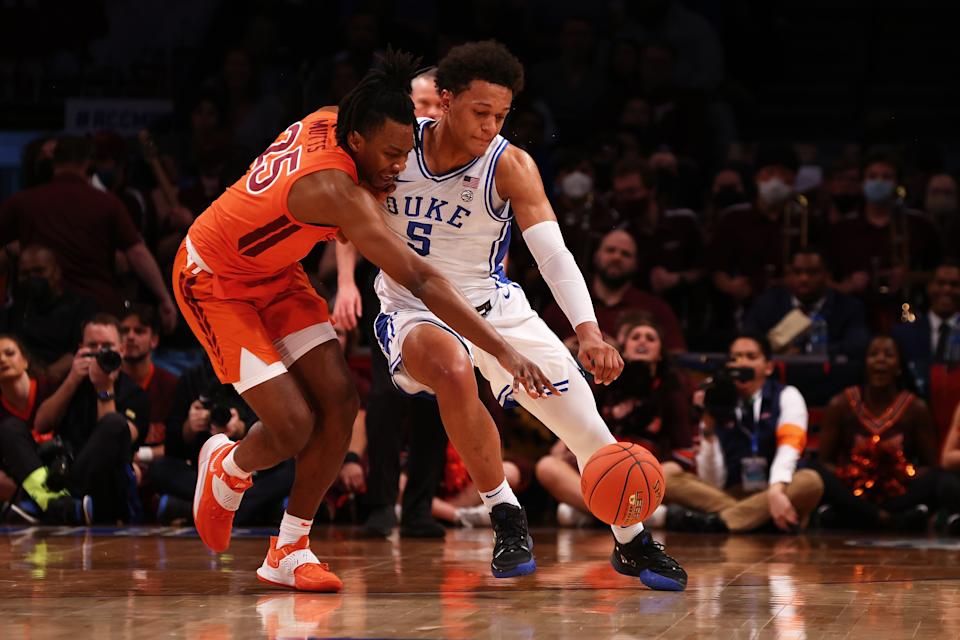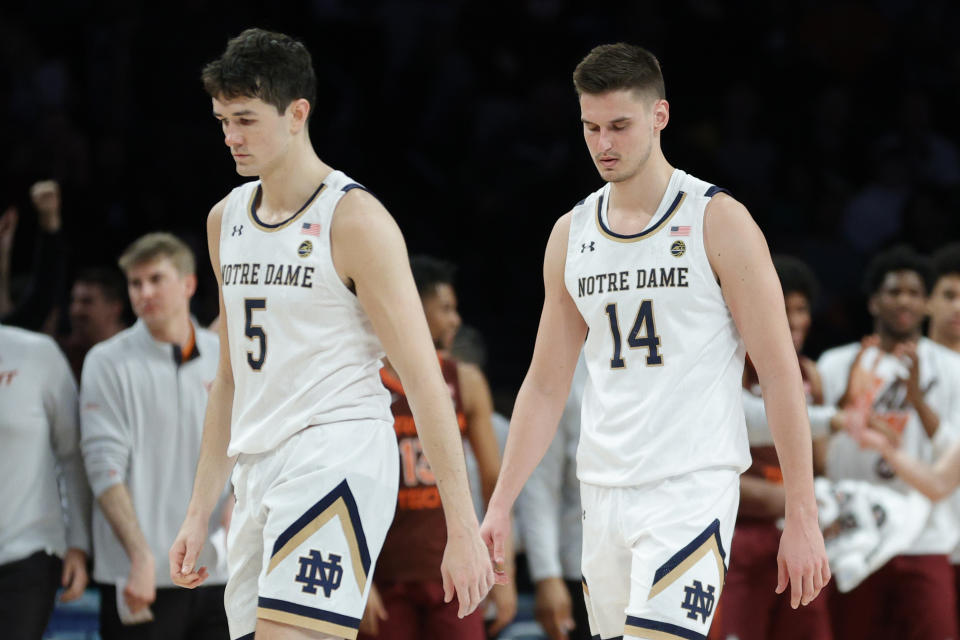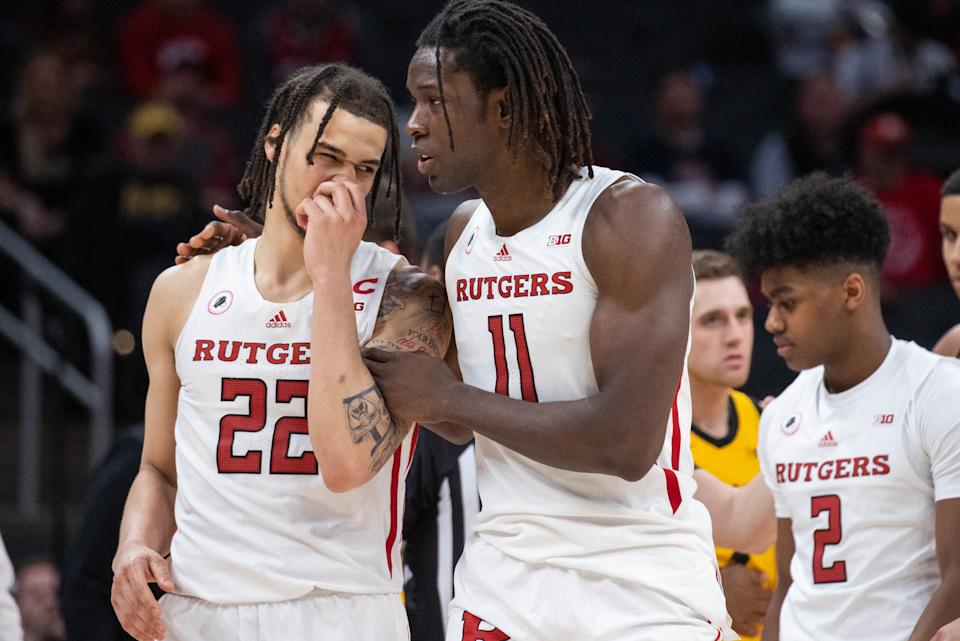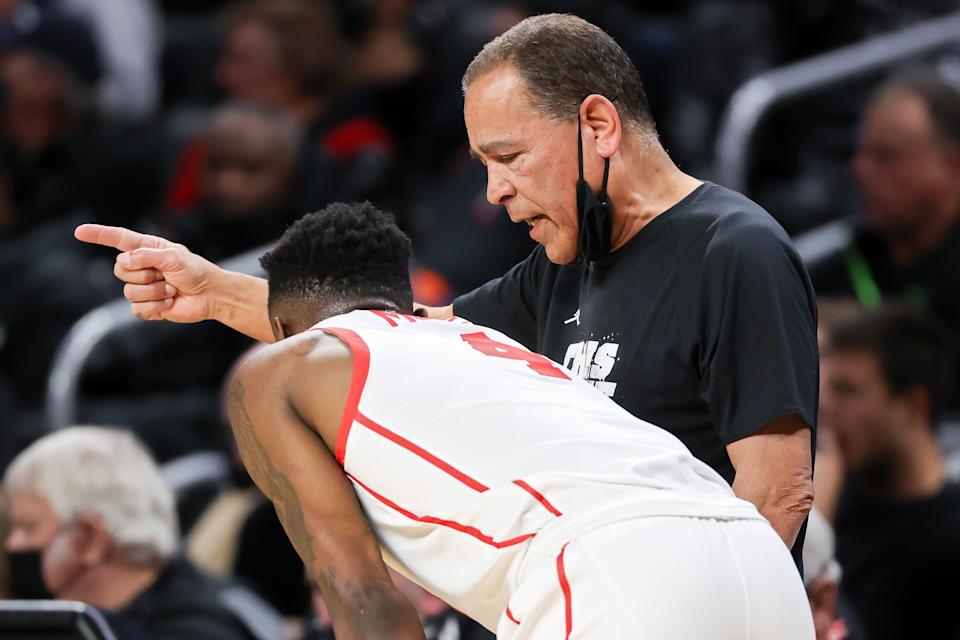Sometime before 6 p.m. EST on Sunday evening, the NCAA tournament selection committee will email a completed bracket to CBS to unveil on the selection show.
Here’s a look at the biggest decisions that the committee will have to make between now and then:
1. Who will join Gonzaga and Arizona as No. 1 seeds?
The chaos in the SEC tournament this week worked in the Big 12’s favor. With neither Auburn nor Kentucky even making the SEC title game, Kansas and Baylor both now appear almost certain to join Gonzaga (26-3) and Arizona (31-3) on the NCAA tournament’s top seed line.
Kansas enters Selection Sunday with 12 Quadrant 1 victories, the most of any team in college basketball. The Big 12 tournament champion Jayhawks boast a 20-6 record in the top two quadrants, three combined wins over Baylor and Texas Tech and only one loss against a team that isn’t assured of making the NCAA tournament.
Baylor fell behind Kansas in the pecking order when it crashed out of the Big 12 tournament in the quarterfinals last Thursday, but the Bears still have a strong enough resume to fend off all other challengers. While the Bears went just 1-3 against Kansas and Texas Tech in league play, they’re 18-6 against the top two quadrants, including marquee non-conference victories over Villanova and Michigan State.
Kansas (28-6, 14-4, NET: 7, KenPom: 6)
Q1 record: 12-5
Q2 record: 8-1
Q3 or Q4 losses: 0
Best wins: Baylor, Texas Tech (2), Texas, Michigan State
Losses: Dayton, at Texas Tech, Kentucky, at Texas, at Baylor, at TCU
Baylor (26-6, 14-4, NET: 5, KenPom: 4)
Q1 record: 10-5
Q2 record: 8-1
Q3 or Q4 losses: 0
Best wins: Kansas, Villanova, Michigan State, Texas (2)
Losses: at Kansas, at Alabama, Texas Tech (2), Oklahoma, Oklahoma State
Had Kentucky or Auburn won the SEC tournament, either probably would’ve leapfrogged Baylor to claim the final No. 1 seed. The Tigers fell in the quarterfinals to Texas A&M and the Wildcats lost a semifinal to Tennessee, plunging both into a group of six teams vying for four spots on the No. 2 seed line.
Kentucky’s rout of Kansas at Allen Fieldhouse likely won’t come into play because the Wildcats never closed the resume gap between themselves and the Jayhawks. It’s the same with Auburn, who fell behind both Kansas and Baylor by fading to the finish line with four losses and an overtime win in its final nine games.
Kentucky (26-7, 14-4, NET: 5, KenPom: 3)
Q1 record: 9-7
Q2 record: 5-0
Q3 or Q4 losses: 0
Best wins: at Kansas, Tennessee, Alabama (2), LSU
Losses: Duke, at Notre Dame, at Auburn, at LSU, Tennessee (2), at Arkansas
Auburn (27-5, 15-3, NET: 12, KenPom: 10)
Q1 record: 8-4
Q2 record: 7-1
Q3 or Q4 losses: 0
Best wins: Kentucky, Alabama (2), LSU, Murray State
Losses: at UConn, at Arkansas, at Florida, at Tennessee, Texas A&M


2. Where will Duke begin Mike Krzyzewski’s final NCAA tournament?
Only once in Mike Krzyzewski’s illustrious career has Duke landed a NCAA tournament seed of No. 3 or lower and still reached the Final Four.
The Blue Devils may have to repeat that feat this year to deliver Krzyzewski the retirement gift that he covets.
Virginia Tech’s 82-67 upset of Duke in Saturday night’s ACC title game damaged the Blue Devils’ hopes of nabbing a No. 2 seed. Duke appears more likely to drop to a No. 3 seed after Villanova won the Big East tournament and Tennessee and Purdue both advanced to their respective conference title games.
While Duke toppled Gonzaga and Kentucky in non-league play this season, the rest of the Blue Devils’ resume isn’t exactly inspiring. A down ACC provided few opportunities for marquee wins and freshman-laden Duke didn’t take advantage of enough of them.
Duke (28-6, 16-4, NET: 11, KenPom: 9)
Q1 record: 6-2
Q2 record: 6-3
Q3 or Q4 losses: 1 (Virginia)
Best wins: Gonzaga, Kentucky, at North Carolina, Virginia Tech, Wake Forest (2)
Losses: at Ohio State, Miami, at Florida State, Virginia, North Carolina, Virginia Tech
Compare Duke’s resume to the teams it is competing against to join Kentucky and Auburn on the No. 2 seed line. You’ll find that Tennessee has more marquee wins and no losses outside the first quadrant. And you’ll find that Duke’s resume is also a shade weaker than Villanova’s and Purdue’s.
Tennessee (25-7, 14-4, NET: 8, KenPom: 10)
Q1 record: 10-7
Q2 record: 5-0
Q3 or Q4 losses: 0
Best wins: Arizona, Kentucky (2), Auburn, LSU, Arkansas
Losses: at Kentucky, Villanova, Texas Tech, at Texas, at LSU, at Arkansas, at Alabama
Villanova (26-7, 16-4, NET: 6, KenPom: 12)
Q1 record: 7-6
Q2 record: 10-1
Q3 or Q4 losses: 0
Best wins: Tennessee, Connecticut (2), Providence (2), Creighton (2)
Losses: at Baylor, at UCLA, Purdue, at UConn, at Creighton, Marquette (2)
Purdue (27-6, 14-6, NET: 13, KenPom: 14)
Q1 record: 8-5
Q2 record: 6-1
Q3 or Q4 losses: 0
Best wins: Villanova, Iowa (2), Illinois (2), Ohio State, North Carolina, Michigan State
Losses: Wisconsin (2), at Indiana, at Michigan, at Michigan State, at Rutgers
Tennessee and Purdue will both have one more chance to add to their resumes on Sunday in their respective conference tournament title games. The Vols meet streaking Texas A&M and the Boilermakers face red-hot Iowa.


3. Which ACC bubble teams will make the field?
Even though the ACC boasts many of college basketball’s biggest brands, the league this year might be the worst it has ever been. Syracuse endured its worst-ever season under Jim Boeheim, Louisville is in shambles, Florida State and Virginia took big steps backward and even North Carolina was mostly just ordinary in Hubert Davis’ debut season.
The result is that teams with gaudy ACC records aren’t nearly as safe as they would usually be entering Selection Sunday. While Duke is on track for a No. 2 seed, North Carolina and Miami are likely to slip into the field and Virginia Tech has the auto bid, the ACC’s other two NCAA tournament contenders have reason to worry about whether they’ll hear their name called.
The most intriguing case is Notre Dame, which stunned Kentucky in December and then went 15-5 in the ACC yet has a bizarrely empty resume. The Irish (22-10) are a meager 4-9 in Q1 or Q2 games, meaning they have fewer than half as many wins in the top two quadrants as many bubble teams. Eighteen of their 22 victories this season came in Quadrant 3 or 4.
Wake Forest won 23 games and went 13-7 in ACC play this season, yet the Demon Deacons’ case is as flimsy as Notre Dame’s. They have fewer Quadrant 1 wins (1) than Quadrant 3 losses (2). Their 338th-rated non-conference schedule also gives the committee an easy excuse to exclude them.
If the selection committee holds true to its word that it doesn’t consider conference record, then Notre Dame might be Sunday’s surprise exclusion a la Louisville a year ago. Wake Forest also seems likely to fall within a few spots of the selection committee’s cut line.


4. Does who a bubble team beats matter more than its bad losses?
Earlier this week, Tom Burnett was asked whether he valued marquee wins or bad losses more when evaluating teams. The committee chairman said “you certainly can’t ignore” Quad 3 and 4 losses but acknowledged that who teams beat is the “predominant factor in selection to the tournament.”
Burnett’s criteria seems encouraging for this year’s bubble team with the most bizarre resume. Rutgers (18-13) has as many Quadrant 1 victories than likely No. 1 seed Arizona, but the Scarlet Knights have a collection of hideous early-season losses weighing down their profile like an anchor.
Way back in November, Rutgers dropped three straight to DePaul, Lafayette and UMass, each of whom are outside the NET’s top 100. The Lafayette loss was especially damaging since it came at home against a 20-loss team that is ranked 300 or below in most major metrics.
Throw in a Quadrant 3 home loss to Maryland, and it’s easy to see why Rutgers is a woeful 78th in the NET Rankings and 53rd or worse in every metric that appears on the team sheets that the selection committee receives. And yet the Scarlet Knights remain a threat to land one of the last at-large bids thanks to victories over every potential Big Ten NCAA tournament team — Purdue, Illinois, Iowa, Wisconsin, Ohio State, Michigan State, Indiana and Michigan.
Can a team with 12 wins in one of college basketball’s best conferences be excluded from the NCAA tournament? Yes. Can a bubble team who lost to Lafayette and four other teams who finished ninth or worse in their respective leagues make the NCAA tournament? Also yes. Ultimately, it’s a close call, which is why Rutgers is a good bet to be one of four bubble teams sent to the First Four to play its way into the main field.
Rutgers is not the only bubble team with a head-scratching combination of big wins and bad losses. Dayton (23-10) has an impressive 8-6 record in Quadrant 1 and 2 games, including a neutral-court victory over Kansas, but the Flyers also have four Quadrant 3 and 4 losses to the likes of LaSalle, Lipscomb, UMass Lowell and Austin Peay.


5. Where should Houston be seeded?
The toughest seeding decision the committee must make might be where Houston belongs on the bracket. The Cougars are ranked in the top six in the country in the major predictive metrics, yet have a resumé that is nowhere near that good.
While Houston enters Sunday’s American Athletic Conference title game with a sparkling 28-5 record, the Cougars still only have one Quadrant 1 victory. They went 0-for-3 against fellow league powers Memphis and SMU and did not beat a single NCAA tournament-caliber team in non-conference play.
Houston bagged its lone Quadrant 1 victory last December in Fort Worth against a 15-loss Oklahoma State team that is ineligible for this year’s NCAA tournament. A neutral-site opponent must rank in the top 50 to count as a Quadrant 1 game. The Cowboys’ NET ranking is exactly No. 50.
How is Houston ranked third in the NET and fifth in KenPom despite a lack of marquee wins? The answer is that the Cougars are 27-1 in non-Quadrant 1 games and have obliterated some respectable opponents, from Oregon, to Virginia, to Butler, to Cincinnati.
Houston did not receive a top-four seed three weeks ago in the NCAA selection committee’s in-season bracket reveal. That’s probably not going to change even if the Cougars take down Memphis in Sunday’s conference tournament title game. Look for Kelvin Sampson’s squad to be a No. 5 or No. 6 seed when the bracket is unveiled.


